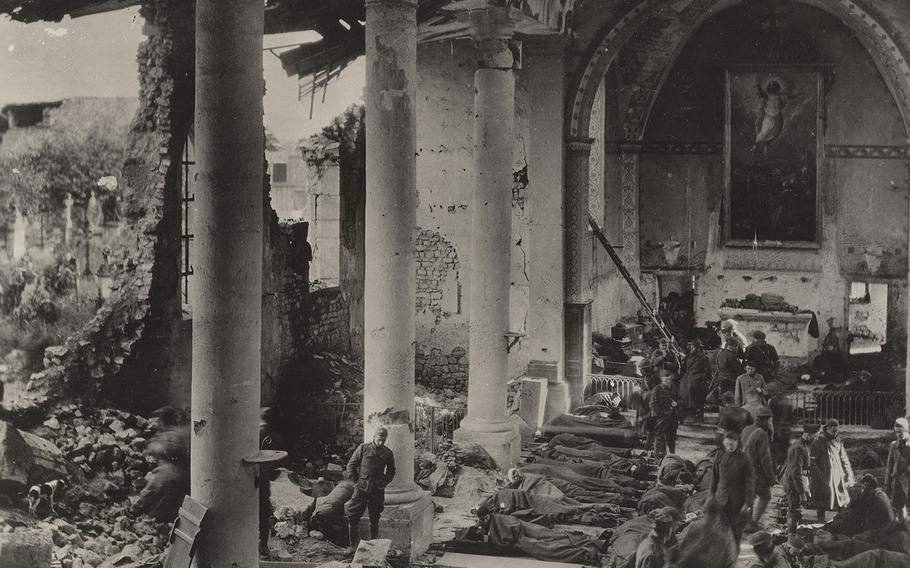
Wounded soldiers are treated by the 110th Sanitary Train, 137th Field Hospital, 35th Division, in an old church in Neuville, Meuse, France on Sept. 20, 1918. (Courtesy the National WWI Museum and Memorial)
One hundred years later, the National World War I Museum and Memorial in Kansas City, Missouri features an exhibition that focuses on the individuals who lived and died during the “crucible of 1918.”
The goal of the museum and memorial is to offer first-hand accounts of the Great War. The main gallery features a French-made Renault FT-17 tank with a gaping hole in its flank, the result of a German shell. A walk-through crater illustrates the devastating effects of a 17-inch howitzer shell striking a French farmhouse. And there are a series of trenches that offer a ground-level view into six different trench scenes with recorded statements from the writings of troops who served in the trenches during that period.
Through March 10, 2019, there is a special exhibition designed to illustrate the crucible of 1918. The severe trials of 1918 gave American women unforeseen opportunities to serve their country in uniform and doughboys on the Western Front forged their fighting force, according to a news release from the museum and memorial.
For more information about the museum and memorial, go to https://www.theworldwar.org/